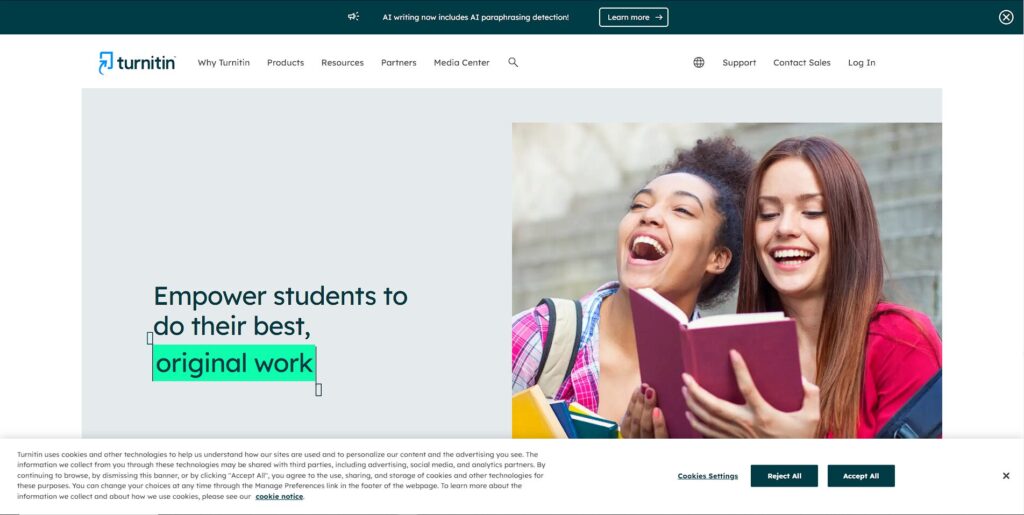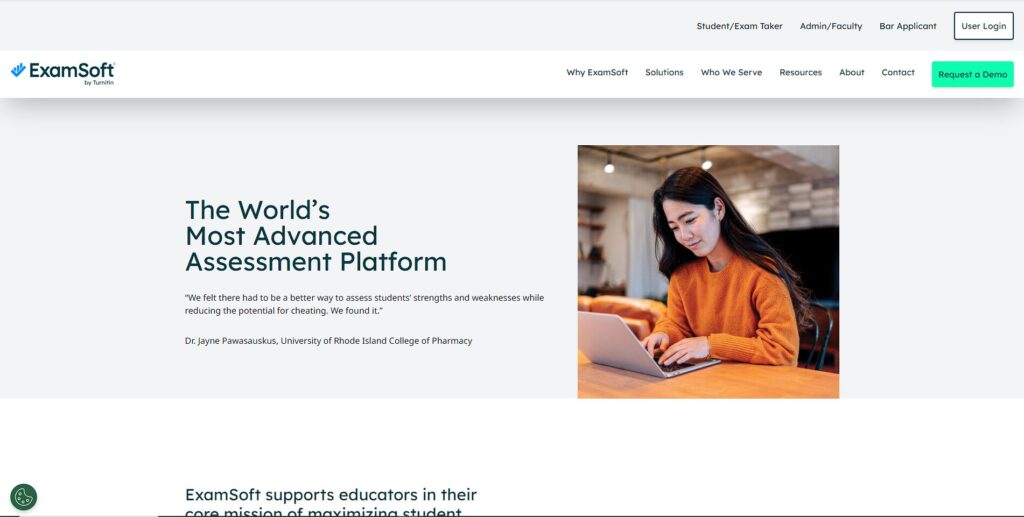Best 5 AI Grading Tools for Students

Table of Contents
Introduction
In the digital age, the integration of Artificial Intelligence (AI) into education has brought about significant transformations. Among these advancements, AI automated grading tools stand out as game-changers. They promise to revolutionize how assessments are conducted, offering a blend of efficiency, accuracy, and immediate feedback. But what exactly are these tools, and how do they benefit both students and educators? Let’s delve into the world of AI automated grading tools and explore the best tools for students.
Benefits of AI Automated Grading Tools
Efficiency and Time-saving
One of the primary benefits of AI automated grading tools is their ability to save time. Traditional grading methods can be tedious and time-consuming, often requiring hours of manual effort. AI tools streamline this process, providing quick and accurate results, allowing teachers to focus more on teaching and less on grading.
Consistency and Fairness
AI grading tools ensure consistency and fairness in assessment. Unlike human graders, who may have subjective biases or inconsistencies, AI systems apply the same standards to every student’s work, promoting a fairer evaluation process.
Immediate Feedback
For students, immediate feedback is crucial for learning and improvement. AI grading tools provide instant results and feedback, enabling students to understand their mistakes and learn from them in real-time.
Top AI Automated Grading Tools
Gradescope

Features
- Supports various types of assessments, including exams and homework
- Uses AI to group similar answers for efficient grading
- Integrates with Learning Management Systems (LMS)
Pros and Cons
- Pros: Efficient grading process, easy integration with LMS
- Cons: May require initial setup time, limited to certain types of assessments
Turnitin

Features
- Known for plagiarism detection
- Offers grading tools and feedback studio
- AI-driven similarity reports
Pros and Cons
- Pros: Comprehensive plagiarism detection, detailed feedback
- Cons: Subscription cost, potential for false positives in similarity reports
SpeedGrader by Canvas
Features
- Integrated with Canvas LMS
- Allows for grading of various assignment types
- Supports multimedia feedback
Pros and Cons
- Pros: Seamless integration with Canvas, versatile feedback options
- Cons: Limited to Canvas users, may have a learning curve
ExamSoft

Features
- Secure exam delivery and proctoring
- Automated scoring for various question types
- Analytics to track student performance
Pros and Cons
- Pros: Secure and reliable, detailed analytics
- Cons: Can be expensive, requires internet access
Crowdmark

Features
- Collaborative grading platform
- Supports multiple graders and feedback
- Integration with various LMS
Pros and Cons
- Pros: Facilitates collaborative grading, integrates well with LMS
- Cons: Requires internet access, can be complex to set up initially
How AI Grading Tools Work
Machine Learning Algorithms
AI grading tools leverage machine learning algorithms to analyze and grade student work. These algorithms are trained on vast datasets to recognize patterns and evaluate answers accurately.
Natural Language Processing
Natural Language Processing (NLP) enables AI tools to understand and assess written responses. NLP algorithms can analyze grammar, coherence, and content relevance, providing a comprehensive evaluation of essays and written assignments.
Data Analytics
Data analytics plays a crucial role in AI grading. By analyzing data from various assessments, AI tools can provide insights into student performance, identify areas of improvement, and predict future outcomes.
Impact on Students
Improved Learning Outcomes
With instant feedback and consistent grading, students can quickly identify their strengths and weaknesses, leading to improved learning outcomes. AI tools help students understand their mistakes and learn more effectively.
Increased Engagement
AI grading tools can increase student engagement by providing interactive feedback and personalized learning experiences. Students are more likely to stay motivated and engaged when they receive timely and constructive feedback.
Personalized Learning
AI tools enable personalized learning by tailoring feedback and recommendations to individual students’ needs. This personalized approach helps students learn at their own pace and improves overall learning efficiency.
Impact on Teachers
Reduced Workload
By automating the grading process, AI tools significantly reduce teachers’ workload, allowing them to focus on instructional activities and student engagement rather than administrative tasks.
Enhanced Teaching Strategies
AI tools provide valuable insights into student performance and learning patterns. Teachers can use this data to refine their teaching strategies, address learning gaps, and enhance overall instructional effectiveness.
Focus on Higher-Order Thinking Skills
With AI handling routine grading tasks, teachers can dedicate more time to fostering higher-order thinking skills, such as critical thinking, problem-solving, and creativity, which are essential for student development.
Challenges and Limitations
Technical Issues
AI grading tools can sometimes encounter technical issues, such as software bugs or compatibility problems with different systems. Ensuring reliable and user-friendly tools is crucial for seamless implementation.
Potential Biases
While AI aims to eliminate human biases, it can still inherit biases from training data. It’s essential to continually monitor and update AI algorithms to minimize potential biases and ensure fair assessments.
Data Privacy Concerns
The use of AI grading tools involves handling sensitive student data. Ensuring data privacy and security is paramount to protect students’ information and maintain trust in AI systems.
Future of AI in Grading
Emerging Trends
The future of AI in grading is promising, with emerging trends such as enhanced AI capabilities, integration with other educational technologies, and more sophisticated assessment methods.
Potential Innovations
Potential innovations in AI grading include adaptive learning systems that provide real-time feedback and personalized learning paths, as well as advanced analytics to predict student success and inform educational strategies.
Long-term Benefits
In the long term, AI grading tools can lead to a more efficient and effective education system, with improved learning outcomes, reduced teacher workload, and a more personalized and engaging learning experience for students.
Case Studies
Schools Using AI Grading Tools Successfully
Numerous schools and educational institutions have successfully implemented AI grading tools, reporting significant improvements in grading efficiency and student performance.
Student and Teacher Feedback
Feedback from students and teachers using AI grading tools has been overwhelmingly positive, highlighting the benefits of timely feedback, personalized learning, and reduced administrative burdens.
Conclusion
AI automated grading tools are revolutionizing the education sector, offering numerous benefits for both students and teachers. By providing efficient, consistent, and immediate feedback, these tools enhance the learning experience and improve educational outcomes. As AI technology continues to advance, the future of grading looks bright, with even more innovative solutions on the horizon.
FAQs
What are AI automated grading tools?
AI automated grading tools are software applications that use artificial intelligence to evaluate and grade student work, providing quick and accurate feedback.
How do AI grading tools benefit students?
AI grading tools benefit students by offering immediate feedback, personalized learning experiences, and consistent evaluations, leading to improved learning outcomes and increased engagement.
Are AI grading tools reliable?
Yes, AI grading tools are generally reliable, but they can sometimes encounter technical issues or biases. Continuous monitoring and updates are essential to ensure accuracy and fairness.
What are the challenges of using AI grading tools?
Challenges of using AI grading tools include technical issues, potential biases in AI algorithms, and data privacy concerns. Addressing these challenges is crucial for successful implementation.
What is the future of AI in education?
The future of AI in education is promising, with emerging trends in adaptive learning, advanced analytics, and personalized learning paths. AI grading tools will continue to evolve, offering even more innovative solutions for the education sector.







